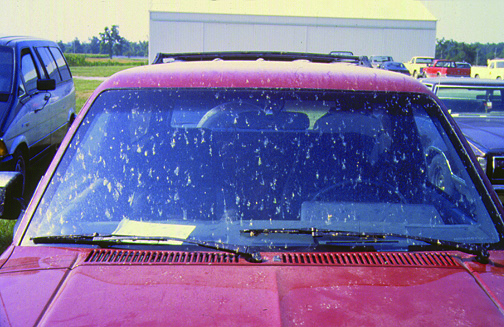For the last several years, we have heard from pest managers about European corn borer (ECB) infestations and damage catching the producer, or themselves, off guard when growing non-traited corn. This seems to occur more often when large acreage of unprotected corn is grown in close proximity. Though this pest has been in decline since the early 2000’s, when Bt-traited corn was becoming predominantly grown in the state, it is very obvious that their many other hosts, including weeds and vegetables, has kept them going…though low numbers.
Questions have been asked about how and when to monitor for this pest. For seasoned pest managers, they recall it was a complex and fickle pest, even in its “heyday” before Bt-corn, varying greatly in damage from year to year. It should be no surprise that for the past couple of decades, there has been virtually no advancement in monitoring and predicting this pest, as the necessity of this work and university research dollars to do it dried up. For years, we maintained and reported captures from a black light trapping network (placed at eight regional Purdue Ag Centers), ECB being one of many moth species. As expected, as Bt corn acreage increased/expanded, ECB moth captures declined; many times they were nearly absent throughout the year. There are no plans to resurrect that trapping program.
One important attribute of ECB biology, concerning monitoring, is that male and female moths mate at the appropriately-named “action sites” during the evening and night. Action sites are grassy areas outside of the field, examples being waterways and roadsides. In order to know early and peak flights of the moths, one must monitor during these times. ECB typically has two generations, historically mean flights are from May 26-June 10 for the first flight and July 26-August 14 for the second. The date range accounts for the developmental (heat) differences from southern to northern Indiana. To “ground-truth” these calendar dates, one can use black light and/or pheromone traps. The other less technical approach, but perfect for night-owls, is to drive farm lanes of the non-traited corn with your vehicle’s bright lights. Yes, you will see them flying around and eliminate a few on the windshield. A slight caution with this method, there are other insect species that can have massive night flights but are not a concern to crops, e.g., mayflies.
Black light and pheromone traps (we have the Iowa strain in Indiana) both have their advantages and disadvantages. Traps need to be placed close to the crop of concern and checked daily, and the general rule is that more traps are better. Trapping, whether by black light or pheromone, for ECB is an art, not a science, and the important point is that trap catches are NOT PREDICTIVE of infestations and/or damage. The reality with any of the methods, even the night drive, is that you are gathering relative flight information to better time your scouting visits to the cornfields, ideally peak mating and egg-laying. Nonetheless, there are no shortcuts for scouting trips to determine egg laying and/or damage. ECB female moths are quite discerning about which field, and where in the field, they deposit their eggs. Meaning they will likely be clustered, rather than uniform, in a given field. If you have not had the pleasure, scouting for first-generation ECB is a walk-in-the-park compared to the second.
With prior research and the tools developed, this new/old pest can be managed quite successfully. Depending on acreage involved, it may require personnel dedicated to understanding and monitoring for this pest. Some might consider hiring a crop consultant that provides such services. If you are contemplating the thought of planned rescue treatments without the monitoring, there are plenty of experienced field personnel that will tell you that it won’t work. The treatment window from egg hatch to larval boring is short, once in the stalk, control is not possible. Happy scouting!



